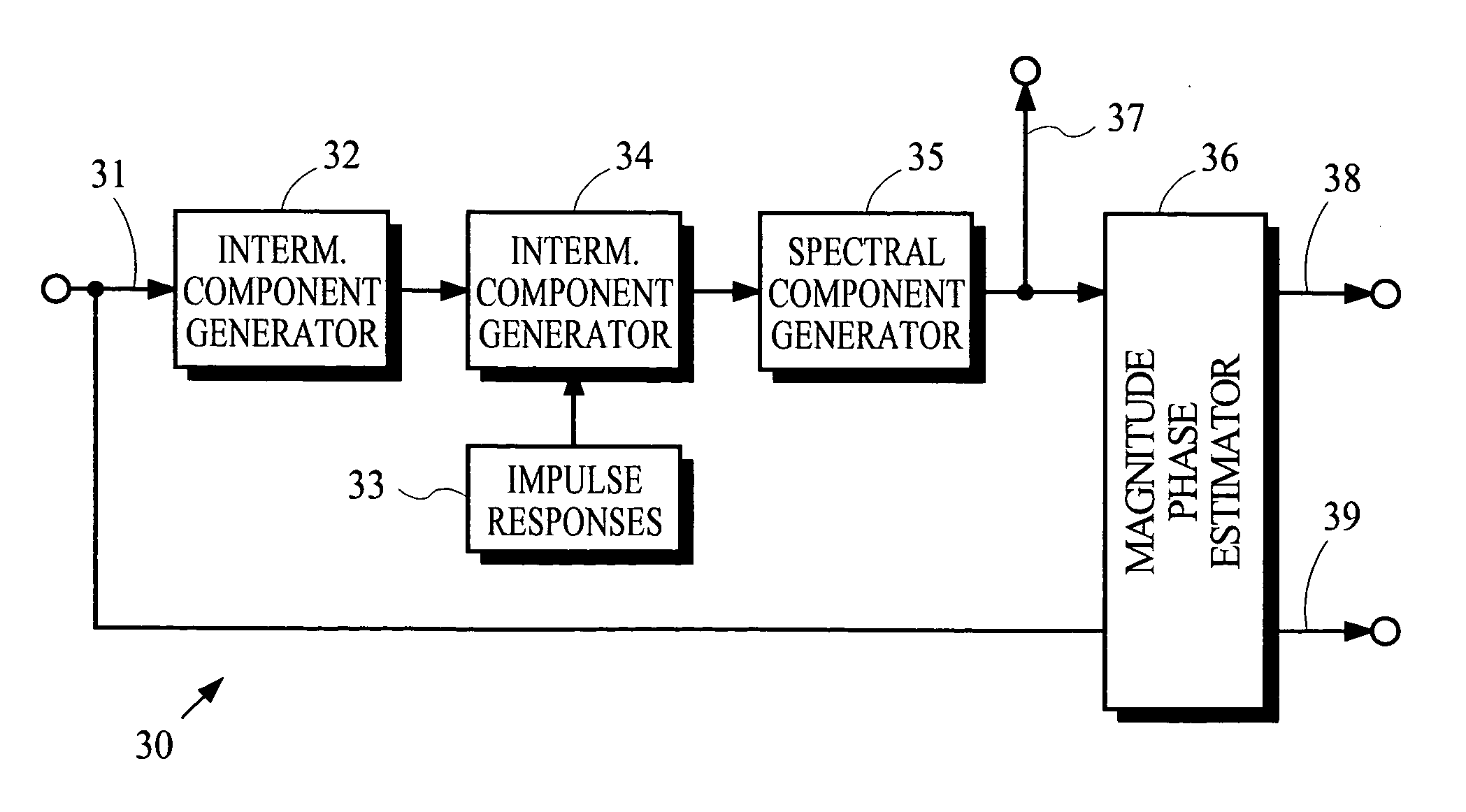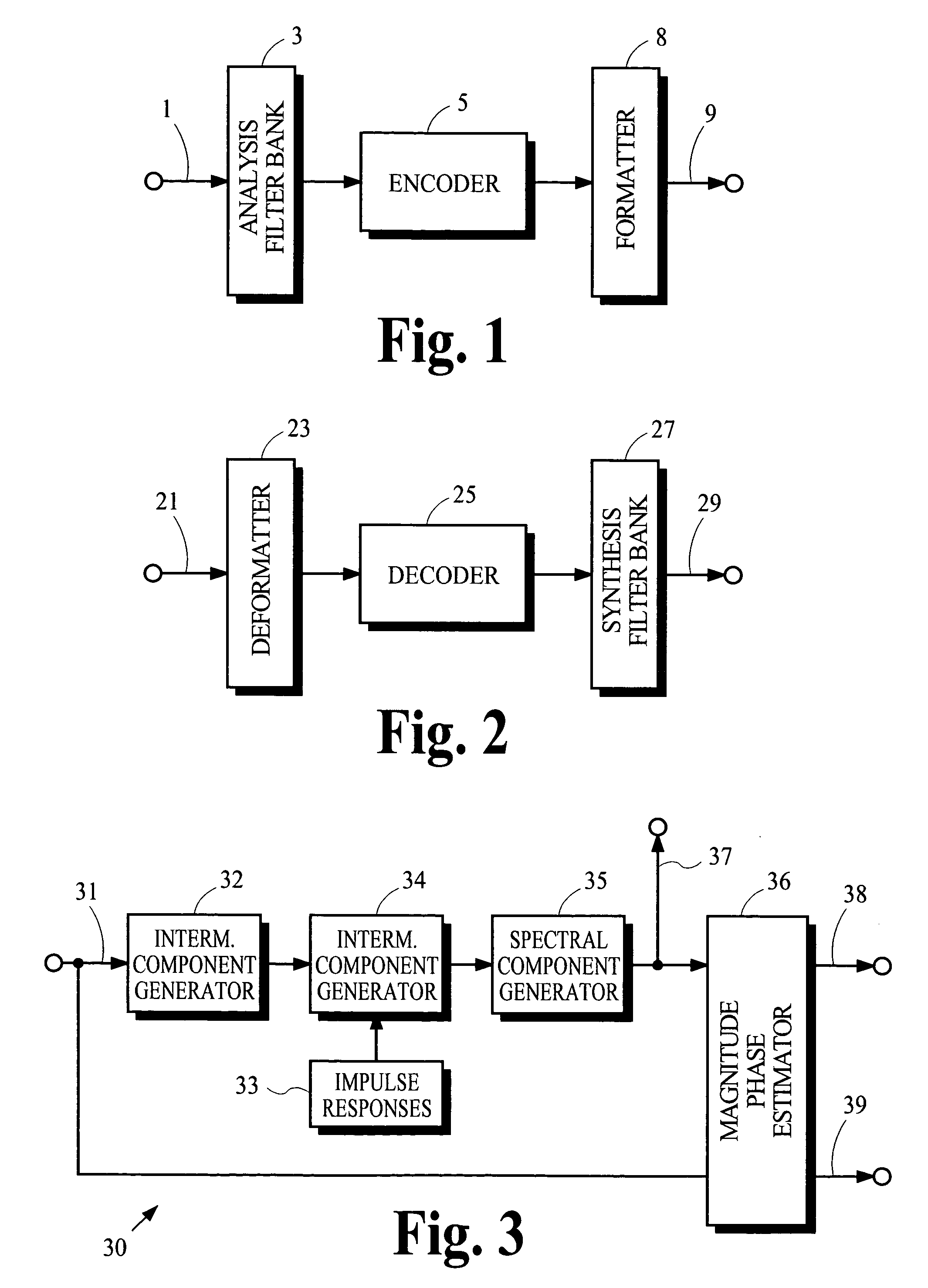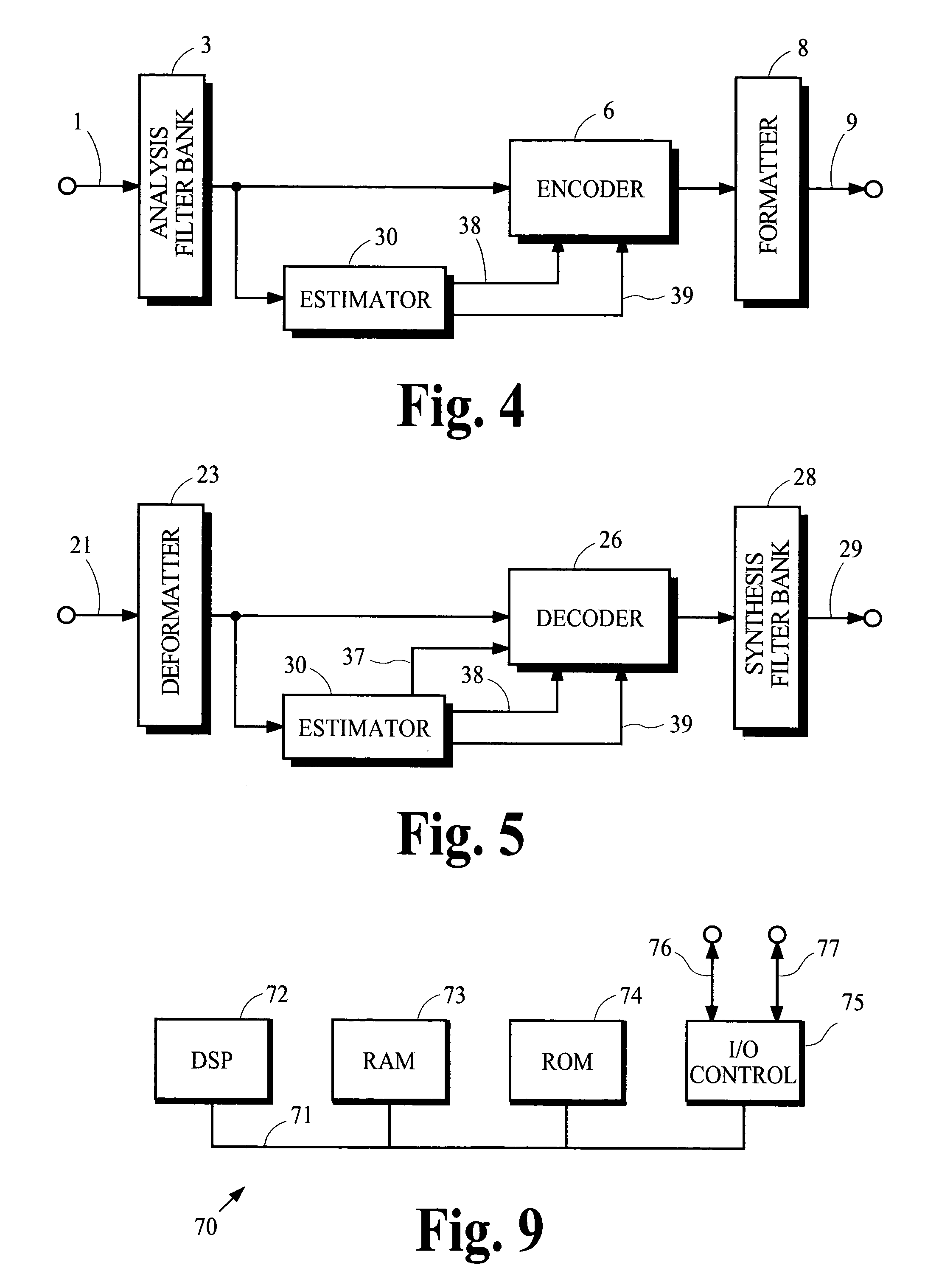Coding techniques using estimated spectral magnitude and phase derived from MDCT coefficients
a coding technique and spectral magnitude technology, applied in the field of coding techniques using estimated spectral magnitude and phase derived from mdct coefficients, can solve the problems of inability to reliably ensure the imperceptibility of quantization noise, the introduction of higher levels of quantization error or “quantization noise” into the signal, and the inability of the system using models known to provide inaccurate predictions of perceptibility to reliably ensure the effect of quantization nois
- Summary
- Abstract
- Description
- Claims
- Application Information
AI Technical Summary
Benefits of technology
Problems solved by technology
Method used
Image
Examples
Embodiment Construction
A. Introduction
[0030]The present invention allows accurate measures of magnitude or phase to be otained from spectral components generated by analysis filter banks such as the Modified Discrete Cosine Transform (MDCT) mentioned above. Various aspects of the present invention may be used in a number of applications including audio and video coding. FIGS. 1 and 2 illustrate schematic block diagrams of a transmitter and receiver, respectively, in a coding system that may incorporate various aspects of the present invention. Features of the illustrated transmitter and receiver are discussed briefly in the following sections. Following this discussion, features of some analysis and synthesis filter banks that are pertinent to calculating measures of magnitude and phase are discussed.
1. Transmitter
[0031]The transmitter illustrated in FIG. 1 applies the analysis filter bank 3 to a source signal received from the path 1 to generate spectral components that represent the spectral content of ...
PUM
 Login to View More
Login to View More Abstract
Description
Claims
Application Information
 Login to View More
Login to View More - R&D
- Intellectual Property
- Life Sciences
- Materials
- Tech Scout
- Unparalleled Data Quality
- Higher Quality Content
- 60% Fewer Hallucinations
Browse by: Latest US Patents, China's latest patents, Technical Efficacy Thesaurus, Application Domain, Technology Topic, Popular Technical Reports.
© 2025 PatSnap. All rights reserved.Legal|Privacy policy|Modern Slavery Act Transparency Statement|Sitemap|About US| Contact US: help@patsnap.com



